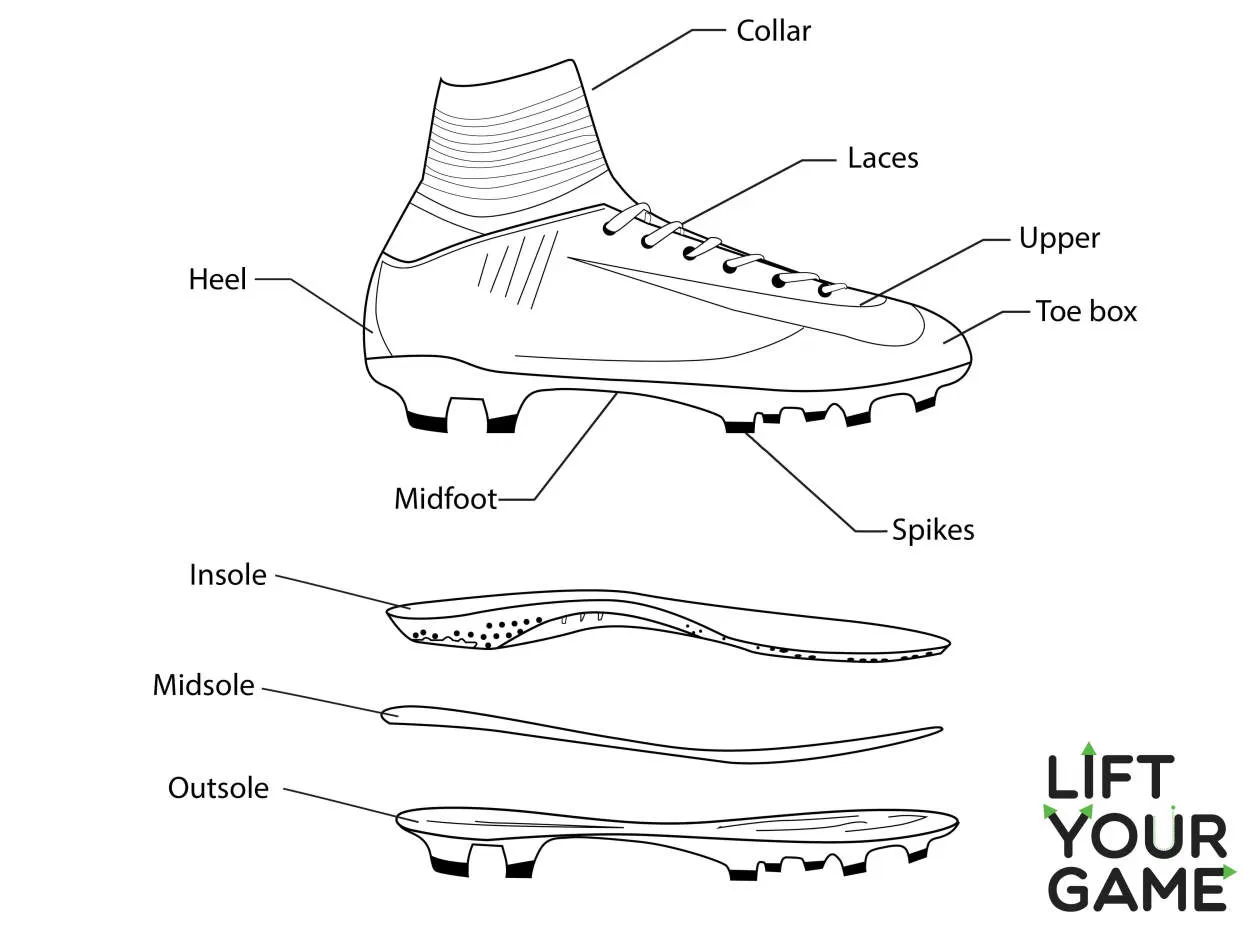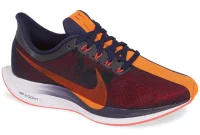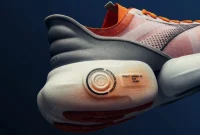Discover the vast array of soccer cleats available on the market today and delve into the world of diversity in this sport. From traditional leather boots to high-tech synthetic materials, explore the various types of cleats used by professional athletes and amateurs alike. Uncover the innovations and advancements that have revolutionized soccer footwear, enhancing performance and player comfort.
Types of Soccer Cleats for Different Playing Surfaces
When it comes to soccer, having the right footwear can greatly impact the player’s performance on the field. With the diverse range of playing surfaces, it’s essential to choose soccer cleats that provide optimal traction and stability. Here are some types of soccer cleats designed for different playing surfaces:
1. Firm Ground (FG) Cleats
FG cleats are the most common and versatile type of soccer cleats. They feature molded studs or blades that work well on natural grass fields. These cleats offer excellent traction and stability, allowing players to make quick turns and navigate firm surfaces with ease.
2. Soft Ground (SG) Cleats
SG cleats are designed for wet or muddy fields where added traction is necessary. These cleats have longer, detachable metal studs that penetrate the soft ground, providing superior grip. It’s important to note that SG cleats should only be used on surfaces that specifically allow them, as they can damage drier fields.
3. Artificial Ground (AG) Cleats
AG cleats are specifically designed for synthetic turf or artificial grass surfaces commonly found in many modern soccer fields. These cleats feature multiple small, circular studs that offer optimal traction on these types of surfaces. AG cleats also provide excellent durability, in order to withstand the harshness of artificial surfaces.
4. Indoor Court Cleats
For indoor soccer or futsal matches, players wear indoor court cleats. These cleats have a flat outsole made of non-marking rubber, enabling players to grip and move swiftly on indoor surfaces such as wood or artificial turf. Indoor court cleats prioritize flexibility and comfort as players engage in fast-paced games without the need for added traction on traditional soccer fields.
5. Turf Cleats
Turf cleats are designed for playing on synthetic turf surfaces or older, harder grass fields. With their short rubber studs or nubs, these cleats provide excellent grip while preventing excessive slipping. They are known for their durability and ability to withstand the abrasive nature of turf, making them a popular choice for players who frequently participate in training or matches on these surfaces.
Key Features of Top Soccer Cleats
Soccer cleats are an essential piece of equipment for any soccer player. They play a vital role in enhancing performance and minimizing the risk of injuries. Here are some key features to look for when choosing top soccer cleats:
-
Comfortable Fit:
The most important aspect of soccer cleats is the fit. They should fit snugly, providing support and stability without causing discomfort or restricting movement. Look for cleats that offer ample cushioning and have a design that conforms well to your foot shape.
-
Durable Construction:
Soccer cleats undergo immense wear and tear during intense matches and practices. Opt for cleats made from high-quality materials such as leather or synthetic uppers that are known for their durability and ability to withstand rough conditions.
-
Excellent Traction:
Traction is crucial on the soccer field to prevent slipping and sliding. Look for cleats with studs or blades that offer excellent grip on various types of surfaces, including grass or artificial turf.
-
Enhanced Ball Control:
The design of soccer cleats can greatly affect ball control. Cleats with a textured upper or additional padding around the striking area provide better ball touch and control, allowing for more precise passes, shots, and dribbling.
-
Lightweight Design:
Lightweight soccer cleats allow for quicker movements and reduced fatigue. Look for cleats made with lighter materials that still offer sufficient protection and support. This will enable you to maintain agility and speed on the field.
When exploring the diversity of soccer cleats available on the market, considering these key features will help you make an informed decision and find the perfect pair that suits your playing style and preferences.
The Evolution of Soccer Cleat Design
Soccer cleats or football boots have come a long way since the early days of the sport. The design and technology behind soccer cleats have evolved significantly, providing players with improved performance and safety on the field.
In the early 19th century, soccer cleats were rudimentary and lacked proper grip. Players mostly wore leather boots with metal studs or spikes for traction. However, these boots were heavy and often caused injuries due to their rigid construction.
As the game progressed and became more popular, manufacturers began experimenting with different materials and designs. In the 1950s, Adidas introduced the first-ever screw-in stud system, allowing players to adjust the length of their studs based on the playing surface.
The 1970s witnessed the emergence of synthetic materials, such as kangaroo leather and nylon, which offered lighter and more flexible options. These advancements led to increased speed and agility for players.
In recent years, soccer cleat designs have seen further advancements. Brands like Nike and Adidas have introduced technologies like Flyknit and Primeknit, which provide a snug and custom fit for players. These materials are also more breathable, reducing discomfort caused by sweat and heat.
Additionally, the incorporation of innovative stud patterns and traction systems has improved stability, grip, and maneuverability on various terrains. Cleats now have better shock absorption, reducing the risk of foot and leg injuries.
The evolution of soccer cleat design has also prioritized sustainability, with brands developing eco-friendly options. Materials made from recycled plastics and renewable resources are becoming more common, contributing to a more environmentally conscious approach.
Looking ahead, it is clear that soccer cleat design will continue to evolve. With advancements in technology and a deeper understanding of biomechanics, we can expect even greater improvements in performance, comfort, and safety for players in the future.
Tips for Choosing the Right Cleats
When it comes to the world of soccer, one crucial piece of equipment that every player needs is a good pair of cleats. With the wide range of options available, it can be overwhelming to choose the right cleats that suit your playing style and needs. Here are some essential tips to consider when selecting the appropriate soccer cleats:
1. Playing Surface
The playing surface is an important factor to consider when choosing soccer cleats. Different surfaces require different types of cleats to ensure optimal performance and safety. The three main types of playing surfaces are:
- Firm Ground: These cleats are designed for natural grass fields. They typically feature molded studs that offer traction and stability.
- Artificial Turf: For synthetic turf surfaces, look for cleats with shorter, multiple rubber studs or dimples that provide better grip and prevent injury.
- Indoor: Indoor soccer shoes have flat rubber soles designed for indoor courts or gymnasiums. They offer better traction on hard surfaces while reducing the risk of damaging the floor.
2. Playing Style
Consider your playing style and position when choosing soccer cleats. Different positions require specific features:
- Forwards and Wingers: Look for cleats that prioritize speed and agility. Lightweight cleats with stud configurations for quick acceleration and sharp turns are ideal.
- Midfielders: Midfielders require cleats that offer a balance of speed, support, and control. Cleats with a combination of studs and blades provide versatility on different surfaces.
- Defenders: Defenders need cleats that prioritize stability and protection. Look for cleats with ankle support, durable materials, and solid traction for tackling and changing directions quickly.
- Goalkeepers: Goalkeepers should opt for cleats with good traction and maneuverability, allowing them to make quick movements and dives while maintaining stability.
3. Fit and Comfort
A proper fit is crucial for both performance and preventing injuries. When trying on cleats, consider the following:
- Sizing: Ensure the cleats fit snugly, with enough space for your toes to move comfortably. Avoid oversized or tight-fitting cleats that might cause blisters or affect your agility.
- Material: Different materials offer varying levels of comfort, durability, and feel. Leather cleats mold to the shape of your foot over time, while synthetic materials often provide lighter weight and quicker drying.
- Ankle Support: Some cleats feature high collars that provide additional ankle support and stability. Consider whether you prefer a low-cut or high-cut design based on your comfort and playing style.
By considering these important factors, you can make an informed decision when choosing soccer cleats that are best suited to your playing needs. Remember, the right pair of cleats can greatly enhance your performance and enjoyment on the field.
The Role of Cleats in Soccer Performance
In the world of soccer, cleats play a crucial role in enhancing performance on the field. These specialized footwear are designed to provide players with the necessary grip, traction, and stability needed to excel in various playing conditions and environments.
One of the primary functions of soccer cleats is to offer optimal traction. The outsole of cleats is equipped with specially designed studs or blades that dig into the ground, allowing players to change direction quickly, make sharp cuts, and accelerate effectively. The type and arrangement of studs can vary depending on the playing surface, ensuring appropriate grip on firm ground, artificial turf, or soft muddy fields.
Besides traction, cleats also provide stability. The design of the shoe, including its shape, material, and construction, ensures that players maintain balance while running, dribbling, and making quick movements. This stability prevents the risk of ankle injuries and allows players to perform confidently without fear of slipping or stumbling.
Another vital aspect of soccer cleats is their impact on ball control. Cleats with a textured upper, such as those featuring ridges, grooves, or panels, can enhance grip and improve contact with the ball. This feature enables players to have better control when receiving, passing, and shooting the ball.
Furthermore, soccer cleats provide protection for players’ feet. The construction of the shoe, including its material and cushioning, helps absorb impact forces and reduces the risk of injuries caused by collisions or stepping on opponents’ feet.
It is important for players to choose the right type of cleats based on their position, playing style, and the playing surface. The market offers a wide range of options, including lightweight speed cleats, durable and protective boots for defenders, and hybrid models for versatile players.
In conclusion, the role of cleats in soccer performance cannot be underestimated. Their impact on traction, stability, ball control, and foot protection allows players to optimize their performance on the field, giving them a competitive edge in matches and training sessions.
Conclusion
In conclusion, the diversity of soccer cleats is impressive. From traditional leather designs to modern lightweight materials, there is a wide range of options available to cater to different playing styles and field conditions. Soccer players can now choose cleats that provide optimal traction, comfort, and support, enhancing their performance on the pitch. As technology advances, we can expect even more innovative designs in the future.




